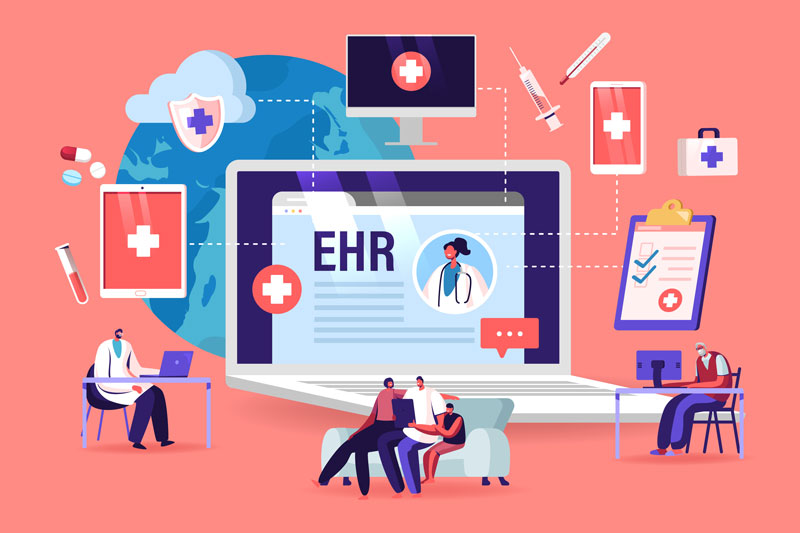In the aftermath of the COVID-19 pandemic, healthcare organizations face immense challenges as they work to provide high-quality care while remaining financially sustainable. The 2023 State of Healthcare Performance Improvement Report by Kaufman Hall offers a glimpse into today’s healthcare sector: a landscape marked by ongoing challenges, yet showing positive signs of stabilization. From persistent workforce issues to financial constraints and supply chain challenges, the industry is navigating a complex environment.
However, amidst these challenges, there lies a beacon of hope: the strategic use of data for performance improvement. Keep reading for the top takeaways of the report and to learn how effective data utilization can be a game-changer in addressing these pressing issues.
Navigating workforce challenges with data-driven strategies
The workforce crisis remains one of the biggest obstacles for healthcare organizations. Staffing shortages drove 66% of hospitals surveyed to run at less than full capacity over the past year. High utilization of expensive contract labor has been a key contributor, though the report indicates decreasing reliance on contracts. Staffing shortages also impacted patient throughput, with 70% of respondents reporting boarding patients in the ED or PACU due to insufficient capacity.
To tackle these workforce challenges, healthcare organizations need robust data on staffing needs and capacity. Here’s how:
- The report recommends the use of predictive workforce demand modeling to optimize staffing plans and scheduling.
- Analyzing hourly patient volume and acuity data can inform the development of flexible shift lengths and schedules to optimize resource allocation.
- Hospitals can benefit from the use of dashboards to track key metrics on contract labor utilization, turnover, open positions, and more to pinpoint pressure points and staffing priorities.
Workforce analytics will be critical for hospitals to succeed in developing sustainable staffing models.
The impact of data on revenue management
Financial performance remains a critical concern, with many organizations struggling to achieve sustainable operating margins. 73% of hospitals surveyed reported an increase in claims denials, which has significantly impacted revenue cycles. Patient mix shifts also impacted revenues, with hospitals reporting more Medicaid and uninsured patients and fewer commercially insured patients. Ultimately, these challenges affect the bottom line.
Revenue cycle analytics are essential for identifying and addressing revenue leakage. Here’s how:
- The report recommends that hospitals should track denial rates by payer and develop scorecards to compare performance across health plans.
- Enterprise-wide analytics that integrate financial and clinical data can also help hospitals to uncover claims denial root causes and implement targeted interventions.
- Analytics can also monitor patient mix trends and model the revenue impact of shifts in payer mix. This data can then inform payer contract negotiations and patient financial services strategies.
Implementing data-driven strategies can help healthcare providers better understand and navigate the complexities of revenue cycles, leading to improved financial health.
Supply chain optimization through data insights
Supply chain disruptions have been a notable concern, with distribution delays (71% of respondents) and sourcing issues (55% of respondents) being prominent. However, healthcare organizations are taking strides in addressing these challenges. More than 80% of respondents are defining approved vendor product substitutes, and 57% are increasing inventory levels to mitigate disruptions.
Data plays a pivotal role in these efforts, providing insights into cost and patient outcomes, which are crucial for decision-making and standardization of supplies. Here’s how:
- The report recommends that hospitals partner with clinicians and providers to standardize supply purchasing, a process that can be bolstered with strategic data-sharing.
- Furthermore, supply chain analytics can track key metrics such as product availability, costs, and inventory needs.
- The report shows that 32% of hospitals are improving their supply usage data and proactively sharing with vendor partners to mitigate supply chain disruptions.
With strong data, hospitals can better understand their supply usage and inventory levels, enabling informed decision-making on supply purchasing.
The way forward with data
While signs of recovery exist, the road ahead remains challenging for health systems. The 2023 State of Healthcare Performance Improvement Report reveals the immense potential of data-driven approaches in addressing these challenges. By leveraging data, hospitals can more effectively navigate workforce complexities, optimize financial performance, and streamline supply chain operations. As the healthcare sector continues to evolve, the strategic use of data will undoubtedly be a key factor in driving performance improvements and ensuring long-term sustainability.
Learn more
- How Hospital CEOs Can Tackle Their Biggest Challenges Using Analytics
- Empowering Healthcare Excellence: Dimensional Insight’s Advanced Analytics Solution
- How Southern Ohio Medical Center Saved $2 Million Annually with Analytics
- Why We’re Best in KLAS—Again! - February 7, 2024
- Building a Greener Healthcare System with Data Analytics - January 22, 2024
- Hospital Finance Predictions for 2024 - January 8, 2024






